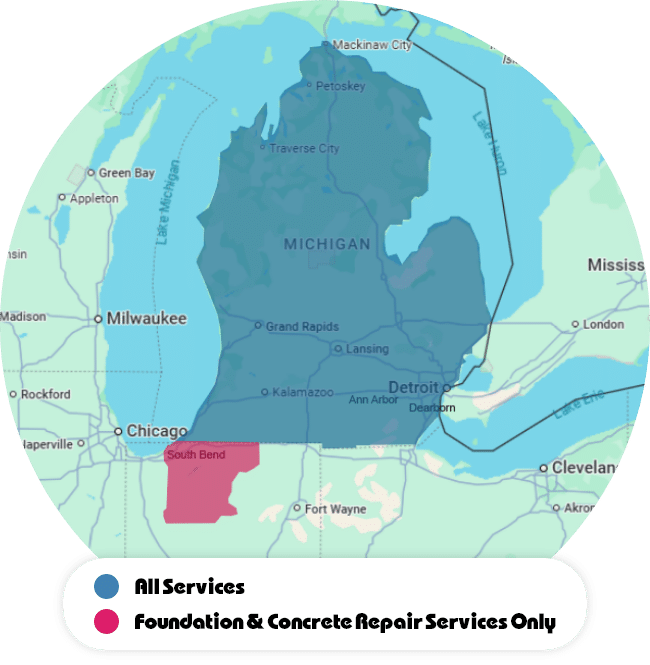4 Types of Insulation and How to Use Them

As temperatures drop, you’re probably starting to notice cold spots in your house more and more often. Everything from the random draft by the back door to the guest room that never quite seems to pull heat can be a headache at this time of year, but one of the biggest sources of cold air leaks in your home is actually below it. Your basement or crawl space needs to be properly sealed in order to prevent outside air from coming in and then traveling up through your home, raising energy bills while keeping you uncomfortable.
The problem is that there are many types of insulation on the market, and the most common ones are completely unsuitable for use below the ground. Let’s look at the types of insulation you may be considering, and talk about what’s best for your home.
Fiberglass Insulation
This is probably what you think of when you hear the word insulation. It’s the fluffy pink or yellow stuff that comes in big rolls and that you’re always warned not to touch too much or it’ll make your skin itchy. And fiberglass insulation is great - but not in your basement or crawl space. There are a few reasons for this.
First, the insulation has an almost fabric-like texture, and with that comes absorbency. Areas below ground are known for moisture issues since they’re literally built into the earth, and the insulation will absorb all of the moisture. This makes the insulation ineffective in a few ways; when it’s wet it really can’t insulate, and eventually it gets so heavy with water that it straight up falls down, rendering it useless.
Second, the paper backing on fiberglass insulation is a breeding ground for mold. All mold needs to thrive is moisture (check) and an organic food source, like...the paper backing on fiberglass insulation. Filling your crawl space with mold is the opposite of your goal here.
DON’T: Put it in your basement or crawl space
DO: Use it upstairs
Blown In Insulation
You’ve probably seen ads for this, and again, there are great applications for it. Blown in insulation is exactly what it sounds like - loose fill material with good insulation properties that’s applied with a machine that essentially looks and acts like a leaf blower. The insulation material can be a loose version of the fiberglass insulation we already talked about, or even something like styrofoam or cellulose.
You probably already know it isn’t a good fit for your basement. But it’s great in attics or when you need to add insulation between finished walls without completely tearing them apart, or in tight spaces where it just isn’t possible to unroll sheets of fiberglass.
DON’T: Put it in your basement or crawl space
DO: Use it in tight spaces between walls or in the attic
Spray Foam/Liquid Foam Insulation
You’ve probably seen this even if you don’t realize it - it comes in a can and gets sprayed in place, expanding into a hardened yellow foam. Spray foam insulation has great insulating properties and is good at preventing water issues (as long as you get the closed cell type and not open cell). Most problems arise when you try to DIY too large of an area. Because of the nature of the material and its expansion, the larger of an area you try to cover, the more likely you are to experience application errors that cause it to shrink away from or miss spots. This will leave you with air intrusions. It also becomes an expensive and lengthy project to try and cover huge areas on your own.
The best way to use spray foam insulation is to pair it with our last type, foam boards.
DON’T: Do too large of an area yourself
DO: Use it with rigid foam boards in your basement or crawl space
Rigid Foam Boards
These are by far the best application for a basement or crawl space. Rigid foam insulation boards, like our SilverGlo panels, offer outstanding insulation properties and durability. They’re also waterproof, allowing them to be installed anywhere. SilverGlo also has a reflective surface material that raises the temperature just a little more, increasing comfort in your home.
While they can be more expensive that other insulation, you’ll only have to install them once, instead of replacing wet and moldy fiberglass insulation every year. These boards should also be installed professionally to ensure proper placement and sealing. Like we mentioned above, spray foam insulation works great with SilverGlo insulation panels by applying it at seams and edges to ensure total protection.
DON’T: Install it yourself
DO: Use it in your basement or crawl space









